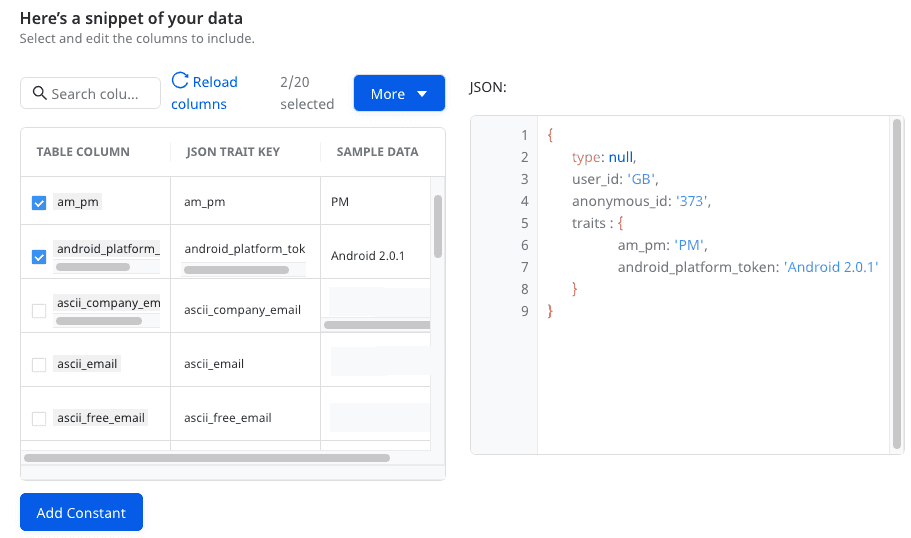Importing Data using Tables
Detailed technical description on the various configuration settings to sync data from your warehouse tables.
This guide lists the settings required to import and sync data from your warehouse table to the specified destination.
This guide is applicable for Reverse ETL sources configured using the Table option. If you have configured your Reverse ETL source using the Model option, refer to the Importing Data using Models guide.
Data import settings
The settings to import and sync data from your warehouse table are listed below:

- Schema: Specify your warehouse schema.
- Table: Specify the table residing within the above schema from which you want RudderStack to import the data.
- Sync mode: Select the sync mode that RudderStack uses to sync your data.
RudderStack supports two modes for syncing your data - Upsert and Mirror. For more information on these modes, refer to the Sync Modes guide.
- Choose user identifier: Choose atleast one user identifier from
user_idandanonymous_idfrom the dropdown. - You will also be able to preview a snippet of your data, as shown:

- Here, you can select all or only specific columns of your choice, search the columns by a keyword, and also edit the JSON Trait Key. You can also preview the resulting JSON on the right.
Alternatively, you can map the columns using the Visual Data Mapper feature. However, note that this feature is currently supported only for selective destinations.
user_id and anonymous_id from the columns selected in the Choose user identifier section. Moreover, the traits are used from the columns selected in the Column section.Add Constant
You can also use the Add Constant option to add a constant key-value pair which is always sent in the JSON payload, as shown:

The new constant will appear in the table and also in the JSON preview inside the traits, as shown:

You can also use the dot notation to define a constant, as shown:

Once you have finalized the configuration, click on Save.
Updating an existing configuration
To update an existing configuration, follow these steps:
- Go to the Schema tab of your configured source.
- Click on the Update button on the top right, as shown:

- Update your column selection.
When updating the configuration, you can only change the existing mappings. The Schema, Table, Sync mode, and the User identifier fields are not editable.
- Finally, click on the Save button.
After updating the configuration, the next sync will be a full sync.
Contact us
For queries on any of the sections covered in this guide, you can contact us or start a conversation in our Slack community.